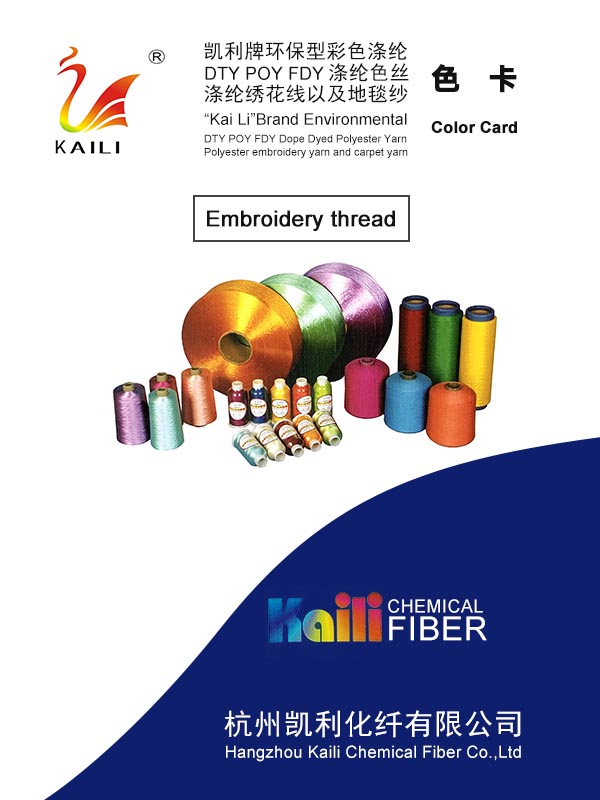Wool-like fiber: Wool-like fiber is to use chemical fib […]
Wool-like fiber: Wool-like fiber is to use chemical fiber to imitate the style characteristics of wool fabric to produce chemical fiber fabric, so as to achieve the purpose of replacing wool with chemical fiber.
First, the performance requirements of wool-like chemical fibers:
1. The tensile properties of wool-like chemical fibers should be similar to those of wool. Some chemical fibers have too much breaking work and good toughness, but their pilling resistance is poor. Therefore, the breaking work of wool-like chemical fibers is not as high as possible, and should be controlled within an appropriate range. It is generally believed that the strength and breaking work of wool-like chemical fibers need only reach the level of wool.
2. Wool-like chemical fibers should have proper curling properties. By crimping wool-like fibers, wool-like crimps can be formed, so that the fabric can have a fluffy, soft, and elastic feel and style, and has a strong wool-like feel.
3. The initial compression modulus of the wool-like chemical fiber assembly should be suitably lower, the compression density should be moderate or higher, and the compression elastic recovery rate should be higher, because the compression elasticity and the fabric feel, softness, elasticity, bulkiness Related to style.

Second, the technical approach to chemical fiber wool
There are two main technical approaches for chemical fiber wool-like: one is to imitate wool fiber morphology and performance to develop wool-like fibers; the other is to imitate wool fabrics from the appearance, style and performance of fabrics by spinning, Synergy of spinning, weaving, dyeing and finishing, etc. to produce fabrics with wool fabric style characteristics and performance.
1. Staple fiber imitation hair
The staple fiber imitation wool is first simulated from the length and fineness of the fiber to make it close to the average length and average linear density of the wool, forming special specifications such as 2.75dtex × 51mm; 3.33dtex × 76mm.
The raw materials for staple fiber imitation wool are mainly polyester, nylon, nylon, viscose, etc.
2. Mid-length fiber imitation hair
Medium-length fiber is a chemical fiber with a medium cut length, and its length is generally 51-76mm, which is between cotton type (38-41mm) and wool type (78-124mm).
Viscose: Viscose is a wool-like fabric produced from the late 1950s to the early 1980s. It is made of 85% viscose and 15% nylon and blended with wool textile dyeing and finishing processes.
Polyester-viscose: Polyester-viscose wool-like fabrics were first introduced into the domestic market by Japan after passing through Hong Kong, also known as "Quick Bus". Because polyester and viscose have different excellent taking properties, blending plays an ideal complementary role and exerts its own advantages. The disadvantages are that the wool feel is too bad (the cotton feel is too strong), it is easy to be worn out, it is easy to stain, and it produces scorched holes in fireworks, so it quickly declined in the mid-1980s.
Polyacrylonitrile: Polyester-acrylic wool-like medium and long fabrics have developed to a certain extent. Because they contain certain acrylic fibers (light specific gravity, good bulkiness, and soft and flexible fibers), the international name is "synthetic wool". The effect is improved, but due to its poor wool-like properties, difficult dyeing processing, and limited equipment, the split-bath process is used. The process is long and the processing is complicated. It has only been developed in wool and knitwear.
3. Filament wool
Filament wool is developed with the development of its deformation technology. From the 1970s to the 1990s through various deformation processing, it not only overcomes the surface of the filament yarn is smooth, shiny, waxy, and stiff No waxiness, jerky stiffness, lack of elasticity and other shortcomings, and has various characteristics of staple fiber yarn, and overcomes the shortcomings of short fiber pilling.
At the same time, in the 1990s, thick and thin sections (thick and thin) were developed, making the same monofilament thicker and thinner. Some filament-like wool-like fabrics have been surprisingly developed, not only in the sense of "feeling fake" The degree of quality and performance has reached a new level of "simulation super real".